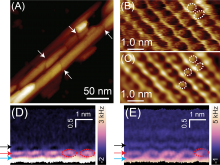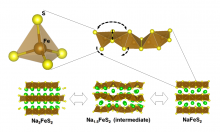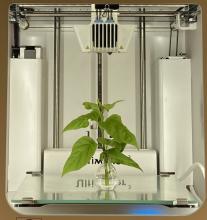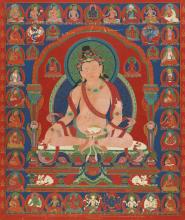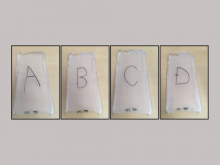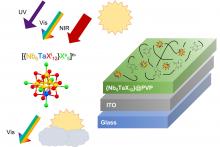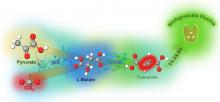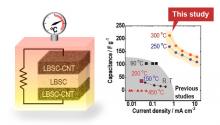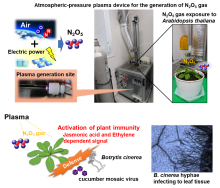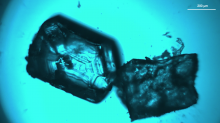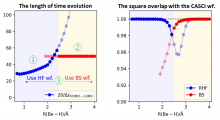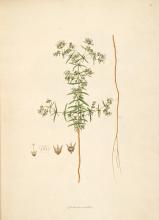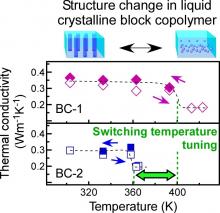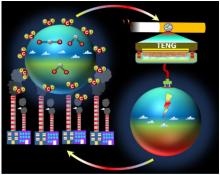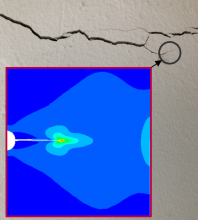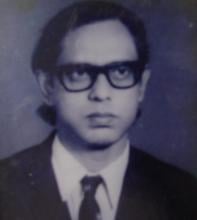Materials
News
14 Oct 2022
A new material is set to provide us with faster and higher resolution displays. Hokkaido University researchers could explain what makes this material so special, opening the door to its application and further development.
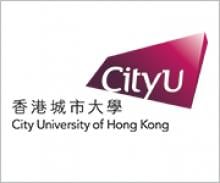
11 Oct 2022
A research team co-led by materials scientists from City University of Hong Kong (CityU) has recently discovered a new mechanism to increase the strength and ductility of a high-entropy alloy, two properties which normally vary inversely with each other. The findings provide important insights for the future design of strong yet ductile high-entropy alloys and high-entropy ceramics.
11 Oct 2022
Osaka Metropolitan University scientists have successfully developed a new positive electrode material Na2FeS2, consisting of sodium, iron, and sulfur. During testing, batteries using the Na2FeS2 positive electrode had a high energy storage capacity and could be charged and discharged for more than 300 cycles. Because the Na2FeS2 is made of abundant inexpensive elements, it is expected to be used in all-solid-state sodium batteries with higher capacity and lower costs.
09 Oct 2022
Batik is a technique of creating patterns on cloth through wax-resist printing and dyeing and has historically been practised in several parts of the world, including India, China, Southeast Asia and Africa.
06 Oct 2022
Asia Research News monitors the latest research news in Asia. Some highlights that caught our attention this week are what happens when the sun goes to sleep, creating a silk stronger than a spider, and a robot that can laugh with you.
01 Oct 2022
A joint group of researchers has successfully developed a method to recycle agriculture waste, namely pineapple leaf fibres, for making filaments that can be used for 3D printing of parts.
29 Sep 2022
Linked lanthanides shine light on crystal engineering, New technique reveals hidden genome, Red, white and blue alerts for dangerous bacteria & Windows gain competitive edge over global warming. Read all in the September's Editor's Choice plus this month's Asia Research News 2022 magazine pick - Floating sensors to gather ocean data.
26 Sep 2022
Hokkaido University researchers find a new way of producing the industrially important propylene that is more energy efficient than existing approaches—and in the process turns carbon dioxide into another usable resource. Their pioneering catalyst design thus contributes to the carbon neutralization of the petrochemical industry.
22 Sep 2022
Researchers at The University of Tokyo grow a nanoscale layer of a superconducting material on top of a nitride-semiconductor substrate, which may help facilitate the integration of quantum qubits with existing microelectronics
08 Sep 2022
Thangka is a devotional scroll-painting tradition, emerging from seventh-century Nepal, in which images of Buddhist deities are painted on scrolls to gain divine merit and to serve as visual aids for teaching and meditating.
07 Sep 2022
Crucial to our everyday use the Li-ion battery can be found everywhere. Research at Tohoku University has resulted in a hybrid electrolyte that is both more stable while also retaining excellent conductivity. This will pave the way to a safer polymeric solid electrolyte for Li-ion batteries with a myriad of applications.
02 Sep 2022
The research team directed by H. Shimomoto and E. Ihara in Ehime University successfully developed a new Pd-based initiating system affording carbon–carbon main-chain polymers bearing end-functional groups. This achievement will contribute to progress in the field of polymer chemistry and will allow us to develop new types of functional polymers.
01 Sep 2022
New research shows that consumers are willing to pay extra for products that give them more to feel.
31 Aug 2022
An international collaboration is developing coating materials that could make windows better insulators.
22 Aug 2022
Osaka Metropolitan University researchers have successfully synthesized fumarate (fumaric acid), a raw material for unsaturated polyester resin, by combining carbon dioxide (CO2) with pyruvate (derived from biomass), using two biocatalysts: malate dehydrogenase and fumarase. Fumarate is currently used to make biodegradable plastic like polybutylene succinate from petroleum. However, this research has enabled the synthesis of fumarate without petroleum, consuming only CO2 and biomass-derived pyruvate.
19 Aug 2022
A research group led by Professor Akitoshi Hayashi at the Osaka Metropolitan University Graduate School of Engineering has successfully developed a high-capacity capacitor, an energy storage device—using a solid electrolyte with high deformability—that can operate at high temperatures. With this discovery, high-capacity capacitors can now be made which do not require cooling, this increases their efficiency and allows for new suitable applications.
19 Aug 2022
The flash of lightning and the dance of auroras contain a fourth state of matter known as plasma, which researchers have harnessed to produce a gas that may activate plant immunity against wide-spread diseases. The team, based at Tohoku University in Japan, published their findings on June 24 in PLOS One.
14 Aug 2022
A genre of sculpture developed in the northwest region of the ancient Indian subcontinent in the form of reliefs and freestanding work as expressions of the Buddhist faith.
12 Aug 2022
Asia Research News monitors the latest research news in Asia. Some highlights that caught our attention this week are the potential use of fish ear bones to tell us about the seawater temperature millions of years ago, how hotter nights can lead to an increase in global mortality, and how Japanese children’s walking development differs to other countries.
12 Aug 2022
Rare earth metals, when linked, can act as a conduit for energy flow, and show promise for the development of novel materials.
02 Aug 2022
Osaka Metropolitan University researchers have clarified the first suitable computational conditions for Adiabatic State Preparation (ASP) executable on a quantum computer, a method that can improve the accuracy of calculating atomic and molecular wave functions.
ASP is thought to be one of the leading methods for efficiently preparing correlated wave functions of molecules with complex electronic structures, but the specific conditions required for the calculations have not been thoroughly investigated so far. This new research has clarified the computational conditions needed to use ASP, a major development for making quantum chemical calculations on a quantum computer practical for chemical or materials research.
31 Jul 2022
The history of extracting chay root dye — a natural red colourant — from the chay plant (Oldenlandia umbellata) dates back to at least the seventeenth century. Read on to know more about the relevance of the dye in the textile dyeing practices of southern India.
29 Jul 2022
Asia Research News monitors the latest research news in Asia. Some highlights that caught our attention this week are the discovery of an ancient palace that could be connected to Genghis Khan, the joy of letting your mind wander, and a wound dressing made from frog skin that promotes healing.
27 Jul 2022
Researchers from Osaka University and collaborating partners used straightforward chemical synthesis to modulate the phase transition of a thermal conductivity-switching block copolymer. Reversible changes in the nanostructured anisotropy in the material corresponded to an approximately two-fold change in the thermal conductivity, over the 27°C to 147°C temperature range. These results will enhance the sustainability of upcoming advanced flexible organic electronics.
23 Jul 2022
Researchers create 'time machine' to study ancestor galaxies, Robotics engineers pay attention to matters of the heart, Custom suits for delivery worms, Tough, light structures with superior impact resistance and Virtual training can reduce stress and anxiety. Read all in the July's Editor's Choice plus op-ed: To boost South Korea’s basic science, look to values, not just budgets, this month's Image & Asia Research News 2022 magazine pick - Better memristors for brain-like computing.
18 Jul 2022
An international team of scientists from India and Singapore has successfully developed a novel method to recycle waste cigarette filters for use in making the triboelectric nano generator, a clean energy generating device.

15 Jul 2022
Two-dimensional (2D) transition metal dichalcogenides (TMDs), an emerging class of materials that can be used as semiconductors and insulators, have promising potential in various applications due to their unique properties. But the reliable production of these atomically thin 2D materials has been challenging. A research team led by a material scientist from City University of Hong Kong (CityU) has developed an efficient electrochemical exfoliation method to achieve high-yield production of TMD nanosheets. This new strategy lays a new direction for mass production of TMD nanosheets for wide application in future.
07 Jul 2022
A novel practical way of modelling cracking and toughening of fibre composite materials has been developed. The novel approach also revealed new insights on the fracture behaviour of fibres reinforcing a composite laminate during intralaminar cracking. The new way can be used to complement inspection of laminated structures that are used as primary structures in many industries.
27 Jun 2022
Scientists at Tokyo Medical and Dental University have discovered a new type of bone repairing material that could be used to more precisely fix bone defects.
Events
Sorry, no events coming up for this topic.
Researchers
Sorry, no researchers coming up for this topic.
- « first
- ‹ previous
- 1
- 2
- 3
Giants in history
Abdus Suttar Khan (c. 1941 – 31 January 2008) was a Bangladeshi engineer who spent a significant part of his career conducting aerospace research with NASA, United Technology and Alstom.
Lin Lanying (7 February 1918 – 4 March 2003) was a Chinese material engineer remembered for her contributions to the field of semiconductor and aerospace materials. Lanying was born into a family who did not believe in educating girls and she was not allowed to go to school.


